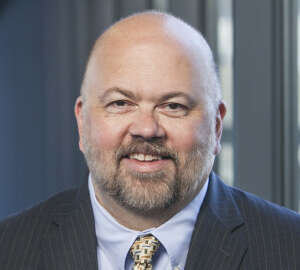

Picking the right health plan could save some federal workers $5,000 in premiums, but Senior Correspondent Mike Causey says lots of people are not dancing in the...
Lots of people love it when others get a break and a chance to save money. Provided, of course, that we are among the “others”.
But if good fortune smiles on them, rather than us, there is less incentive to join the cheerleader squad.
Take the current extended open enrollment period for two-family feds. Please…
During the regular open season last year, anybody in the federal health program could change plans or change options within their current plan. They could change regardless of age, medical condition, preexisting conditions, lifestyle, race, religion, color, creed or national origin. You sign up for a plan, they must take you. No questions asked. That’s why they call it an “open” season!
During the regular open season, active and retired feds, postal workers, their spouses, family members and survivors could move to the vast majority of the plans. They could also change options within their current plan. Or move to another plan. Again, open season.
During the regular open season, policy-holders could move to or from family coverage. Or to self-only coverage. Or into the new self-plus-one option. Again, open season.
Despite the open rules of an open season, only about 6 percent of policy-holders change plans each year. But …
During the November-December 2015 open season, a record number of people, about 10 percent of those enrolled in the program, switched plans. While that’s a huge jump, it wasn’t enough according to Walton Francis. He’s editor of Consumers’ Checkbook Guide to Health Plans for Federal Employees & Annuitants. Francis said that during any regular open season at least half the enrollees could get equal or better coverage, at lower cost, if they shopped and switched. That’s especially true for retirees, many of whom stay in the same plan year-after-year even though its premiums may be rising faster than others — because it covers so many retirees.
Francis said that during any open season, at least half the people, “maybe more should consider changing plans.”
Despite the jump in plan changes during the open season, the government decided to give workers one more chance. This time an “extended enrollment period” for the entire month of February. But unlike a regular open season, this is limited to people who are currently in the family plan (self-plus family), but who want to try out the new self-plus one option. As the name implies it is for two-person families. A couple, single parent, whatever. Two people.
While some people are grateful for a second-chance at the new self-plus-one (S+1) option, others are not so much. For a couple of reasons.
The big winners are people currently in a plan whose family plan option this year costs a lot more than its new S+1 option. In some plans the difference is small. In a few, the new S+1 option costs MORE than the family option, although benefits, services and providers are the same. The big winners (and there aren’t all that many) are people in a plan where there is a HUGE difference in the S+1 premiums vs. the family option. Best example: People in the MD-IPA who are enrolled in the family plan now, or who enroll in the MD-IPA S+1 option this month, will enjoy a huge savings. Family premium of $8,869.12 vs. a premium of $3,755.96 for the new S+1 option. That’s the good news…
The bad news, of course, is that most people aren’t in the plan with the $5,000 savings. Nor are they in one of the plans with any substantial savings to two-person family enrollees. For them, this is an unfair second bite at the apple for some but not most feds:
For a look at the S+1 options, click here.
To check out Meredith Somers’ wrap up on the S+1 open enrollment, and her summary of what Walt Francis had to say on the extended enrollment period situation, click here.
In 1920, Russian immigrant Adolph Levitt invented the first doughnut machine in his New York City bakery.
Source: Smithsonian.com
Copyright © 2025 Federal News Network. All rights reserved. This website is not intended for users located within the European Economic Area.
Mike Causey is senior correspondent for Federal News Network and writes his daily Federal Report column on federal employees’ pay, benefits and retirement.
Follow @mcauseyWFED

